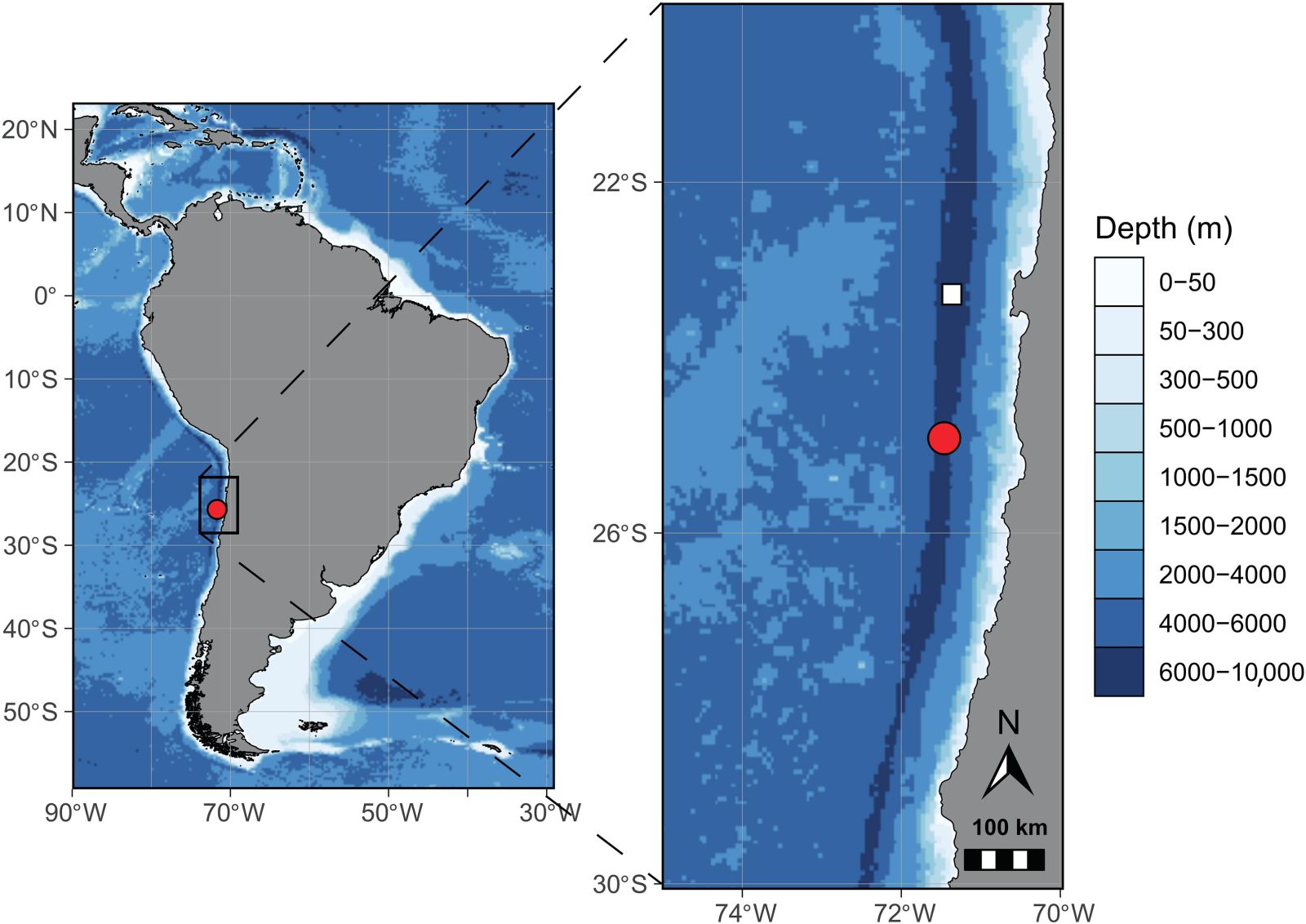This predator discovered in the abyss belongs to an unknown species and genus 🧬
Published by Cédric,
Author of the article: Cédric DEPOND
Source: Systematics and Biodiversity
Other Languages: FR, DE, ES, PT
Author of the article: Cédric DEPOND
Source: Systematics and Biodiversity
Other Languages: FR, DE, ES, PT
Follow us on Google News (click on ☆)
The Atacama Trench, located along the coasts of Peru and Chile, is a chasm of unsuspected biodiversity. Descending to depths of 8,065 meters (26,460 feet), it is one of the most inaccessible marine ecosystems in the world. Here, hostile conditions host species that challenge the imagination.

Post-conservation photo of Dulcibella camanchaca.
Female holotype (MNHNCL AMP-15974).
Among them is a crustacean of surprising size for its group, named Dulcibella camanchaca. Discovered in 2023, this amphipod represents both a new species and a new genus. At four centimeters (1.6 inches) in length, it dominates its environment, an impressive feat for a predator of the abyss.
This crustacean is distinguished by its robust appendages, which allow it to capture smaller prey. Unlike other amphipods in oceanic trenches, which are often scavengers, D. camanchaca is an active hunter, agile in the icy waters of the hadal zone.
The species' name evokes the darkness of the abyss and local cultures: camanchaca is an Andean term describing the cold mists of the ocean, while Dulcibella is a nod to Don Quixote's muse Dulcinea, a traditional literary reference for this group of amphipods.
The discovery required specialized equipment, including a lander capable of withstanding immense pressure. During this mission, four specimens were retrieved and genetically analyzed, confirming their uniqueness within the amphipods.
The results of this research, published in Systematics and Biodiversity, underscore the importance of oceanic trenches as refuges of endemic biodiversity. These geographically isolated environments harbor unique ecosystems that remain largely unexplored.

Atacama Trench along the west coast of South America (left), where the black frame indicates the sampling area (right).
The red circle marks the IDOOS 2023 expedition's lander station (7,902 meters / 25,925 feet) and the location of Dulcibella camanchaca (7,902 meters / 25,925 feet, 23°55′S, 71°27′W). The white square marks the deepest point of the Atacama Trench.
Scientists believe that continued exploration of the Atacama Trench could reveal many other species, offering valuable clues about biological adaptations to extreme conditions. Each new discovery also sheds light on the impact of human activities on these ecosystems.
The abyss remains among the last unexplored frontiers of our planet. Understanding its functioning and preserving its balance is crucial, not just for its biodiversity but also to anticipate the consequences of climate change and pollution.
What is the hadal zone?
The hadal zone refers to the deepest parts of the oceans, located below 6,000 meters (19,685 feet) from the surface. It primarily encompasses oceanic trenches like the Atacama Trench.
This extreme region is characterized by total darkness, temperatures close to 0°C (32°F), and immense pressure, up to 1,100 times that at sea level.
Despite these hostile conditions, the hadal zone is home to unique, often endemic organisms, adapted to survive and thrive in these abyssal depths.
Its exploration, made possible by advanced technologies, continues to reveal astonishing species and illuminate the mechanisms of life's adaptation to extreme environments.